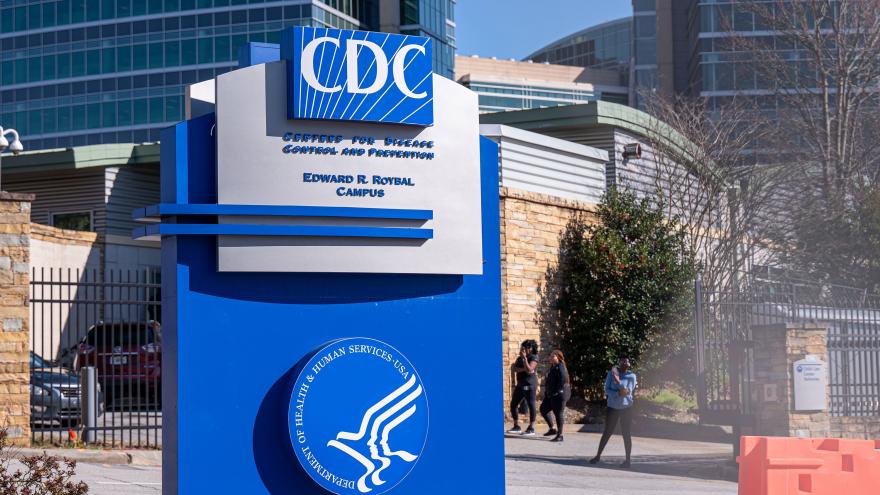Wisconsin sets new COVID-19 record with 2,533 more cases in 1 day amid CDC changing testing guidelines
WISCONSIN (CBS 58) -- It's been another day of startling coronavirus case numbers in the State of Wisconsin Friday, Sept. 18.
The Wisconsin Department of Health Services (DHS) reported 2,533 new confirmed cases of COVID-19. It's the largest single-day increase we've seen so far.
A 2nd record-setting day for #COVID19_WI cases, as we add 2,500+ to our total. Please take steps to avoid illness & protect your community. Stay home if you can, stay 6' away from others, wash your hands often, and #MaskUpWisconsin. #YouStopTheSpread: https://t.co/azIna3TqRRpic.twitter.com/2KseuvIbwy
— WIDeptHealthServices (@DHSWI) September 18, 2020
Wisconsin has 97,279 confirmed cases in total, DHS says. Seven new deaths were confirmed Friday, bringing the total to 1,238.
In response to the high number of cases, Department of Health Services Secretary-designee Andrea Palm issued the following statement:
“Nearly every county in Wisconsin is currently experiencing high disease activity. While this surge may be driven by individuals in the 18-24 year-old age group, Wisconsin is seeing an increase in positive cases in every other age group as well.
We also know you can spread the virus to others even before feeling any symptoms, and that not everyone with COVID-19 has symptoms but they can still spread the virus to others. So, if you are feeling ill or if you may have been exposed to someone who has tested positive, we strongly urge you to get tested and self-quarantine for 14-days. That means staying home, avoiding contact with others, and only leaving your home if it is absolutely necessary.
Please remember that COVID-19 is a highly contagious virus. It spreads in the air and can remain there for hours. The best tools we have to stop the spread of this virus are the good public health practices we have emphasized throughout this pandemic; staying home whenever possible, wearing a mask or face covering in public spaces, keeping six feet apart from others, and washing your hands frequently. We are at a critical point, and now is the time for all of us to redouble our efforts to help stop the spread here in Wisconsin.”
Wisconsin’s record breaking coronavirus numbers is now also being paired with the CDC changing their guidelines on testing, again.
The new guidelines published Friday went back to say anyone who’s been in contact with an infected person should get tested. This after last month the CDC said people who didn’t have symptoms after being exposed, didn’t necessarily need to get one.
While there’s an adequate amount of tests available, doctors say the supply isn’t unlimited and they would hate to see someone use a test simply for their curiosity. Doctors say there are two groups of people who should get tested. The first group is people with symptoms.
“Fever and cough or you feel like you’re coming down with a cold or the flu, those are individuals who should get tested,” said Dr. Jeff Pothof, Emergency Medicine Physician and Chief Quality officer at UW Health.
The second group is anyone who knows they were exposed to COVID-19, even if they don’t have symptoms like outlined by the CDC.
“Public health might of called you and said ‘hey just wanted to let you know we’ve been doing some contact tracing and you had a close contact with someone who had COVID-19,’” said Dr. Pothof.
“We define a known exposure as being in contact with somebody who we know has COVID and it’s defined as being within 6 feet for more than 15 minutes,” said Laura Cassidy, an epidemiologist at Medical College of Wisconsin.
If you’re just curious or nervous because of the current high number of cases but have no known exposure or symptoms, don’t get tested.
“Unless there’s a reason to get tested that would be unnecessary if we’re all practicing safe behaviors,” adds Cassidy.
“If they haven’t participated in risky behaviors, and you know if you’re just curious that might not be the best reason to get tested,” says Dr. Pothof.
Risky behaviors include being out in public without a mask while being close to other people, especially if you were less than six feet apart for more than 15 minutes or longer.
Doctors say large gatherings like sporting events, concerts, rallies and parties are risky.
“If you’re going to a party there’s people you don’t know and if they’re not practicing safe behaviors then you’re putting yourself at risk,” said Cassidy.
With no vaccine yet and cases continuing to rise in the state, Dr. Pothof says the best tools in the shed are the three W’s, washing your hands, wearing a mask and watching your distance.
“If we do those things there’s lots of evidence that says it’s effective and we can turn the tide on this pandemic in the state,” he says.
Dr. Pothof says if you fit one of the two groups and plan on getting tested, wait three to five days after exposure. If you get tested too quickly you might get a false negative.
For more information on the CDC guidelines on testing, CLICK HERE.















